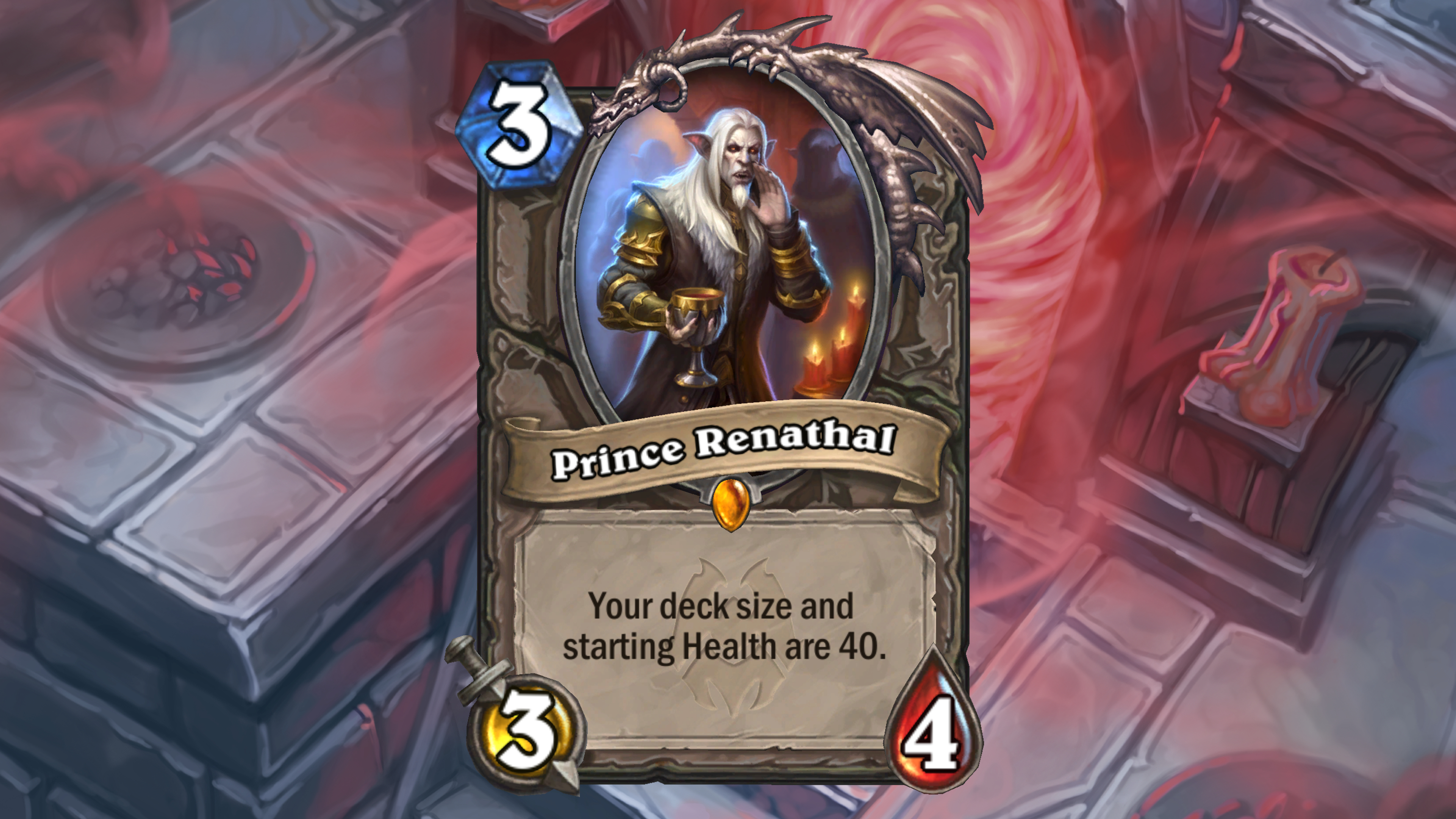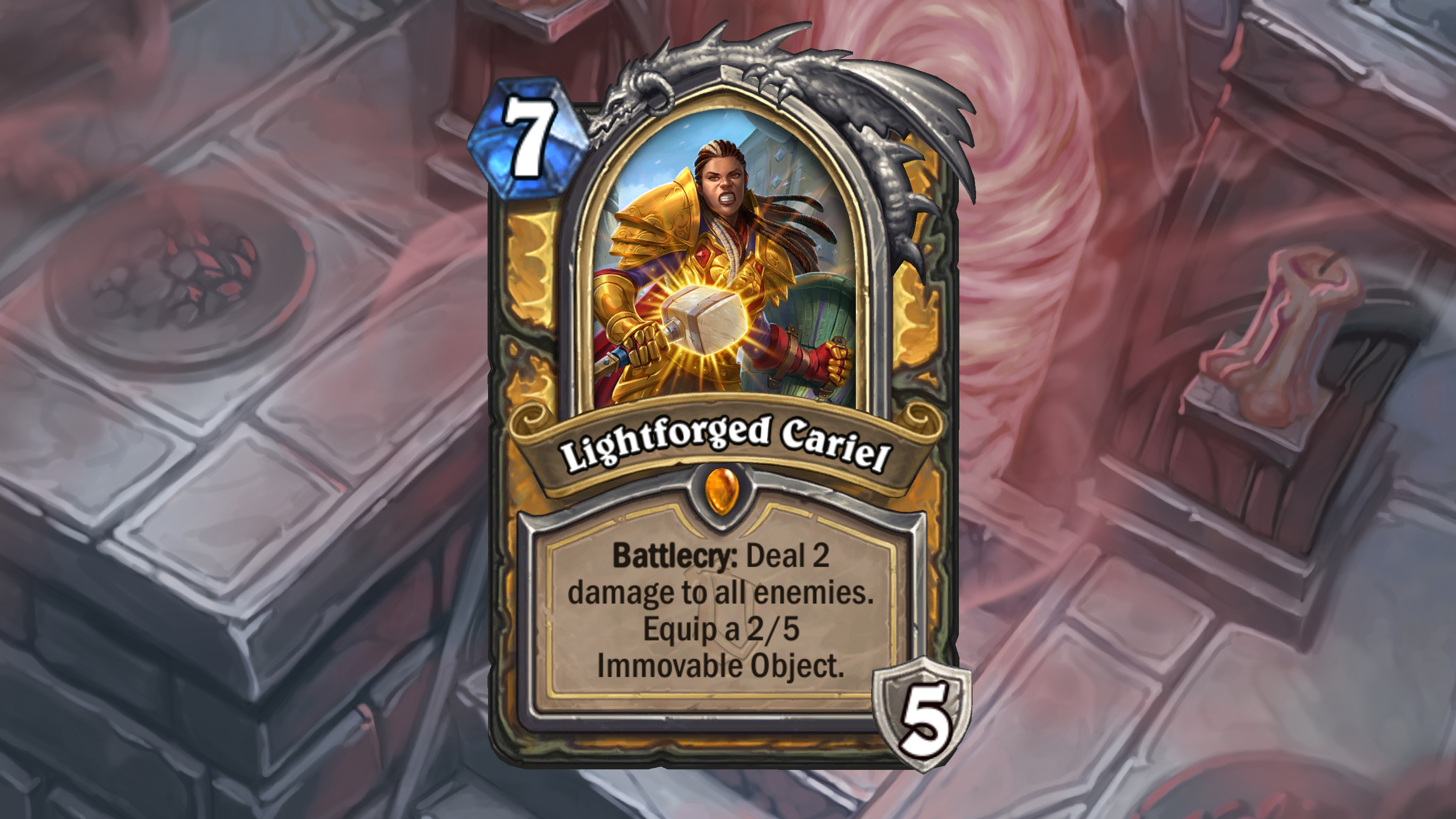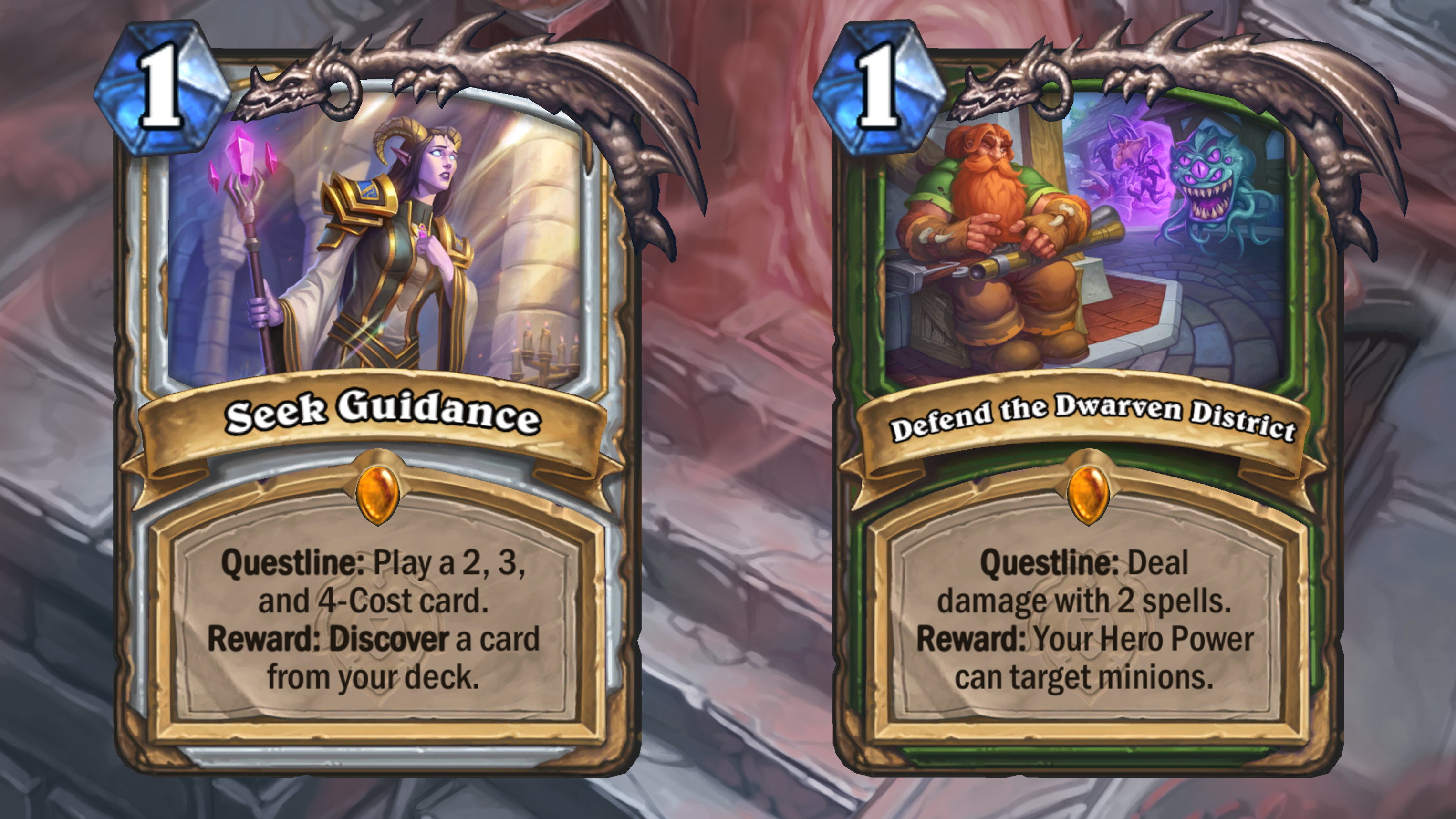How one card completely changed the way Hearthstone works
Prince Renathal has ushered in the biggest change to Blizzard's eight year-old card game since Reno Jackson.

During the last month of any Hearthstone expansion, it feels like players are stuck playing the same decks in what amounts to a waiting room for the next expansion. In order to spice things up, a few years ago Blizzard began giving away a single neutral Legendary card from the forthcoming set with the intention of upending the stale meta. The actual impact of these cards has varied wildly. Some, like Archmage Vargoth and Kael'Thas Sunstrider, had effects that were so splashy that they enabled whole deck archetypes. Others, like the recent Blademaster Okani, were so universally solid that they could be slotted into almost any deck. There have been whiffs too, like Shadow Hunter Vol'Jin, who we do not talk about.
But no card has turned the game on its head quite like Prince Renathal.
Released on June 27 as a teaser for next month's Murder at Castle Nathria expansion, Prince Renathal makes two fundamentals change to the way that deckbuilding works. Include the card and two things happen: Firstly, your starting life total is increased from 30 to 40. Secondly, you now have to include 40 cards rather than 30 in order to complete your deck.
The life increase is obviously powerful, because an extra 10 health can often buy an extra turn against aggressive opponents, enabling slower decks to stabilize. However, having to include 10 extra cards in your deck is a more significant drawback than it might initially seem. If you're not familiar with collectible card games, you might think more cards just mean more options. It's a trap that many new card game players fall into, because it fails to account for how important the consistency of your draw is.
Think about it this way: If you pick the 30 best cards for your deck, then picking a 31st card means it must be worse than your first 30. Renathal's condition means including 10 extra cards that, by this logic, are worse options than the initial 30 you would have picked. (Renathal himself is a 'vanilla' 3/4—i.e. he doesn't have any special card text—which makes him very underwhelming.) So the question becomes, is that extra 10 life really worth harming the consistency with which you're likely to draw your best cards over your worse ones?
On the day the card was released, Initial Designer Cora Georgiou acknowledged that dilemma, tweeting: "Is he good, or is he just good fun?" However, perhaps showing her hand a little, she added that Renathal is: "Poised to be the most meta-defining giveaway legendary that we've ever done." And so it has very much proved. If you've played the game at all since then, you will know that Renathal is everywhere, including most lineups at last weekend's Master's Tour esports event.

We recently spoke to Georgiou, who was the lead on Murder at Castle Nathria, as well asinitial designer Leo Robles, to ask them about why now was the time to experiment with player starting health totals, which are such a core part of the game's balance.
The biggest gaming news, reviews and hardware deals
Keep up to date with the most important stories and the best deals, as picked by the PC Gamer team.
"I think as Hearthstone has been around longer, and as a lot of us on the team have more experience working on the game, we just feel a little bit bolder at taking risks," Georgiou said. "We really wanted Prince Renathal to be this card that breaks rules a little bit. We felt the set needed just one more card that had some punch, and this was where we wanted to do it. "
This might be the longest time I've seen it take for the players to come to a general consensus about a card.
—Cora Georgiou, game designer, Blizzard
Punch might be an understatement. According to data tracking site HSReplay, Renathal is in 49% of all decks from Diamond to Legend rank since release. The card has been tried in many existing decks and brand new strategies. Its functionality has clearly had a seismic effect on deck construction that won't be figured out overnight, and the designers view that as a big positive so far.
Cora: "Surprisingly, I will say, I think that this is maybe the longest time I've ever seen it take for the players to come to a general consensus about a card. You still see players on both sides of the equation, going from 'this is broken' to 'this is not very good', and I think that's the best outcome that we could have hoped for. It keeps people wanting to play, and they keep coming across new decks that are having crazy success with, like Lady Prestor Druid."
Leo: "I think the most important thing is that this one single card is creating so many new decks and promoting gameplay that people really like [along with] the debate over whether he's good or bad. Like, you can play aggro decks and still chew through 40 Health of your opponent because they're not drawing that Brawl that they needed on turn five. Instead they draw the 31st card they put in there. One of my favorite things I've seen online is somebody who had posted 'Oh, I've been playing a Renathal demon hunter deck, and my win rate has dropped 5%, but it's so fun and I'm gonna keep playing it.' I love that."

Taking back control
Initial community reaction to Renathal, and what have been dubbed XL-sized decks, centered on the idea that slower 'control' strategies were going to finally be more viable. The logic being that the 10 extra health naturally suits decks that are looking to go long. Does the data agree? Not so much. Holy Paladin wants to draw Lightforged Cariel, its OP hero card, so much that finding it matters way more than the life bump. In fact, it turns out Renathal decks are often favored against control decks that want to remove all their stuff… because they have more stuff to start with.
So where does Renathal really shine? The answer seems to be in proactive decks that would usually have weak defensive options and also have ways to consistently find specific mid-game cards they really need. That means Renathal synergises well with two other notable types of cards: 'Tutors' and 'Quests'.
Prestor Druid is a great example of tutor-based strategy. The plan is as simple as it is gimmicky: You're guaranteed to draw Lady Prestor when you play Capture Coldtooth Mine. (To add further redundancy, Jerry-Rig Carpenter can be used to guarantee you find Capture Coldtooth Mine.) You then play Prestor as quickly as you can, turning all the cheap minions you've included to shore up your early game into dragons that often have powerful effects. The chances are high that you'll also find a game-ending Kazakusan. Renathal Big Beast Hunter isn't quite as cheesy, but it takes advantage of cards like Selective Breeder, Pet Collector, and the Dredge mechanic to remain remarkably consistent.

Quest Hunter is potentially the best deck on ladder.
—Vicious Syndicate
Quests have improved, too, because the extra life gives them the extra time needed to get their reward online more regularly and the best card in the deck always starts in hand. But while many twisted Priest players are overjoyed to be blowing their opponent up at full health after a 25 minute game using Purified Shard, they may not be quite so happy to hear that Quest Hunter is potentially the best deck on ladder. The latest Vicious Syndicate Data Reaper report concludes: "Quest Hunter could represent the strongest list of 40-cards on ladder. Those who hailed Renathal as a promoter of “value-centric control decks” before its release must be thrilled with the return of one of the most notorious Stormwind questlines to top tier play."
Right now, due to set rotation, we're experimenting with Renathal while relatively few expansions are available, so it's hard to say what will happen when we get a deeper card pool to play with. Will he be more consistent when those extra cards you have to include are more powerful? Or will his viability fall off as 30-card decks get stronger later in the year?
For me, one thing's clear: this has been the weirdest last month of a meta ever. One card dropping felt like a whole new set was released, and the possibilities now available to players have massively expanded. That sounds like a good thing to me. And when even Zeddy is happy, you know something's gone right.
Prince Renathal is the best thing to happen to Hearthstone in years.July 1, 2022

